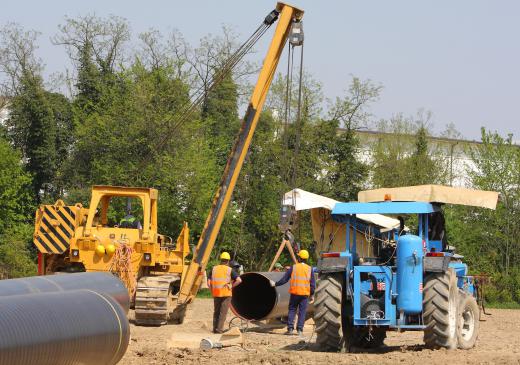A portable hoist is a type of movable apparatus used for lifting objects. Portable hoists are a widely varied group of machines with many different styles and designs. Portable hoists may be powered or manually operated with hydraulics or other mechanisms for lifting and suspending loads.
A common type of portable hoist, often used to lift or suspend automobile engines during repair or installation, consists of a wheeled base of two long beams joined together in a V shape. At the point of the V, an arm rises upwards and then extends outwards over the middle of the opening of the V. A large hook of some type on a chain or cable is usually suspended from this arm and is used as the attachment point for the load to be lifted. Many hoists of this type have hydraulic mechanisms for lifting and lowering loads that are actuated by manual pumping. The load, once positioned as desired, may be held in that position indefinitely.

Almost any movable apparatus for lifting objects can be called a portable hoist. Portable gantry cranes are built with two upright, wheeled A-frames with an overhead beam connecting them. The hoist mechanism is designed to slide along this overhead beam and may consist of a simple ratcheting pulley or a powerful electric motor for lifting. Once the load is lifted and the hoist is locked in place, the entire hoist can be moved anywhere desired.
Construction sites and movers sometimes employ another type of portable hoist when lifting materials or heavy objects that won't fit on stairs or in elevators. This type of portable hoist is essentially a small crane with a base that is assembled in place on the rooftop or upper story of a construction project. A stable base supports the crane arm with a hook or other mechanism for securing loads. Most portable hoists of this type are powered either by electric motors or other means and are capable of lifting several tons in some cases.
A light duty type of portable hoist may consist of nothing more than the actual hoist mechanism itself which may be a manually operated ratcheting device that slowly lifts a load a little at a time. The ratcheting mechanism consists of a cylinder wound with cable or chain and with deep teeth cut into it. A lever with matching teeth is used to pull the wheel which lifts the load, and the teeth of the wheel lock onto another set of gripping teeth which keep the wheel from unwinding the cable or chain. The lever is then reset and used to turn the wheel a little more, gradually lifting the load. This type of hoist can be attached by a chain to an overhead beam, a sturdy tree limb or trunk, or any anchor capable of holding the load safely.
